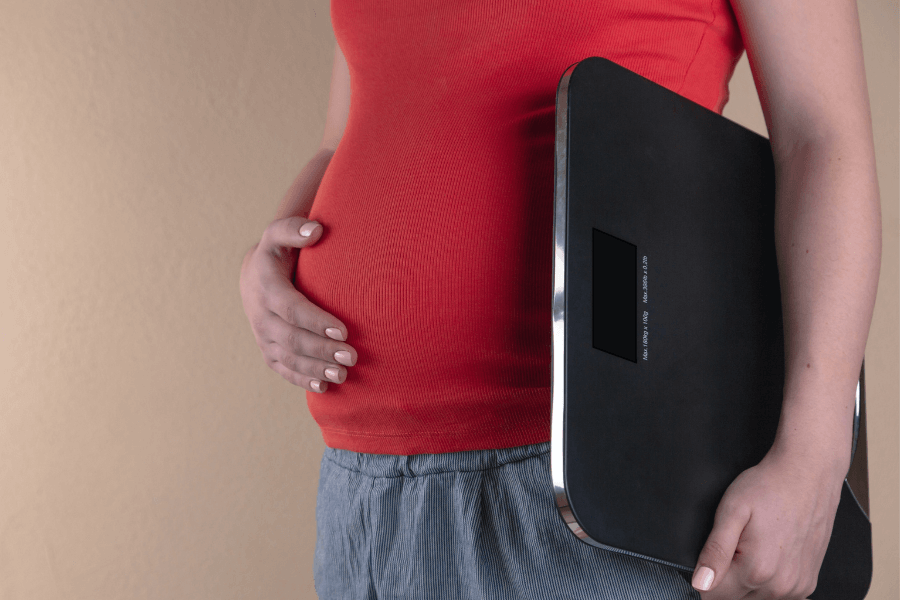The value of prevention: lifestyle interventions may be a cost-effective way to support healthy pregnancies

DATE
TYPE Prevention Centre News
The intergenerational nature of the obesity epidemic is highlighted in the National Obesity Strategy with recognition that “the first 1,000 days of life, from a woman’s pregnancy (conception) to her child’s second birthday influences the likelihood of obesity in infancy, childhood, and later in life”. Embedding support for healthy eating, sleeping and physical activity into standard maternal health service practice (before, during and after pregnancy) is key action nominated in the Strategy.
Addressing this issue is a key focus of the Centre of Research Excellence in Health in Preconception and Pregnancy (CRE HiPP), part of the Collaboration for Enhanced Research Impact (CERI). ). Lead author and Health Economist Dr Cate Bailey, and her CRE HiPP team, recently published a paper showing healthcare interventions to improve diet and physical activity behaviours in pregnancy can potentially reduce some of the most common pregnancy complications. As well as seriously affecting the health of both mothers and children, pregnancy complications place an enormous economic burden on healthcare systems.
When implementing interventions in real-world settings, policy makers need reliable information on cost-effectiveness to appropriately allocate scarce resources. Understanding which types of interventions are more cost-effective is essential for policy decision making
Senior author, Associate Professor Zanfina Ademi, Monash University Health Economist
Researchers conducted a systematic meta-analysis of 117 randomised controlled trials of antenatal lifestyle interventions at all stages of pregnancy. The data from these studies was used to conduct a cost-effectiveness analysis looking at the effectiveness of these interventions in preventing three high-priority pregnancy complications: gestational diabetes mellitus (GDM), hypertensive disorders in pregnancy such as preeclampsia, and caesarean delivery.
The findings are now published in A Comparison of the Cost-Effectiveness of Lifestyle Interventions in Pregnancy and report approximately 15% of pregnant women in Australia are expected to develop GDM, and these women are likely to have a higher incidence of hypertensive disease in pregnancy. In the US the annual cost burden on healthcare systems of GDM is estimated at $1.3 billion, and $1.03 billion for preeclampsia.
Associate Professor Zanfina Ademi, said although much research has been done on pregnancy lifestyle interventions, there has been little success in converting them into economic models.
“Some of these interventions seem to be beneficial for women but we really don’t know whether they provide value for money, and whether governments will be willing to pay for them,” she said. “Here we used the available resources to build a mathematical model. We bridged clinical trial data with other sources, then used this to make a cost effectiveness model – it’s like Lego.”
The results of this research demonstrate that physical activity interventions are the most likely to be cost saving, potentially reducing the three adverse maternal events studied by 4.2% in the intervention group. Diet and diet with physical activity interventions are also likely to be cost-effective, potentially reducing adverse events by 3.5% and 2.9% respectively.
Dr Cate Bailey said interventions were investigated in broad categories and defining the best interventions for different target groups is an area which requires further work.
There are clearly positive effects of being healthy during pregnancy but we don’t want the responsibility to lie solely with women. Given that healthy lifestyle interventions appear to be cost-effective, we need to support all women to have access to resources and support that enables them to be healthy.
Lead author Dr Cate Bailey, Monash and Melbourne University, Health Economist
Co-author and CRE HiPP Director Professor Helen Skouteris echoed this sentiment, “we should never stigmatise or blame women, rather we should work with them to meet their needs and support health and wellbeing for all during pregnancy”.



